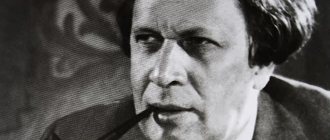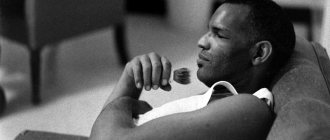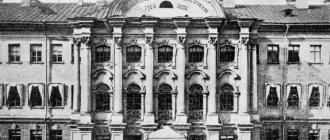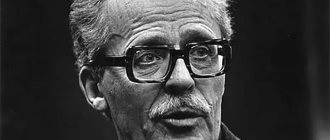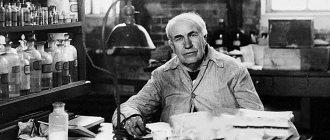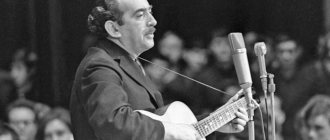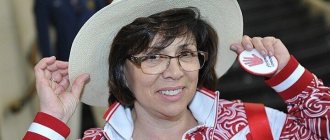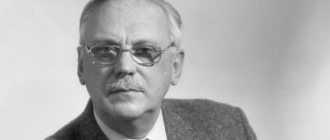Alexander Suvorov is a Russian commander, the founder of Russian military theory, a national hero of Russia. Generalissimo, Field Marshal General, Field Marshal General of the Holy Roman Empire, Grand Marshal of the Piedmontese troops, holder of all Russian orders of his time awarded to men, as well as seven foreign ones.
Since 1789, he bore the honorary title Count Suvorov-Rymniksky, and since 1799, Prince of Italy, Count Suvorov-Rymniksky.
There are a lot of interesting facts in Suvorov’s biography, because this brilliant commander did not lose a single battle throughout his career, and also repeatedly completely defeated enemy forces that were significantly superior in numbers.
In total, Suvorov fought more than 60 major battles, and he was a supporter of rapid offensive operations against the enemy, and therefore never used defensive combat techniques.
Suvorov also went down in history as an extremely caring military leader who valued the lives and well-being of his soldiers most of all. It most accurately corresponded to Lermontov’s expression “Father to Soldiers.”
So, here is a short biography of Suvorov .
Biography of Suvorov
Alexander Vasilyevich Suvorov was born on November 13 (24), 1730 in Moscow. It must be said that biographers do not have the same opinion regarding the exact date of birth of the commander.
Suvorov's mother, Avdotya Feodosyevna, was the daughter of the vice-president of the Patrimonial Collegium. Father, Vasily Ivanovich, was the godson of Peter 1.
During the reign of Catherine 2, the father of the future commander served in the secret chancellery, as a result of which he received the rank of general. An interesting fact is that Suvorov Sr. was the creator of the first military dictionary in Russia.
Childhood and youth
From an early age, Suvorov’s biography showed a special attraction to military strategies. He loved to spend a long time in the family library, reading relevant books.
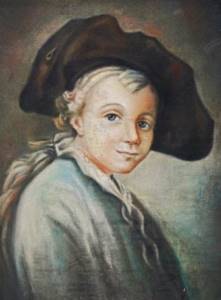
Suvorov in childhood
The boy showed great interest in military affairs and dreamed of becoming a soldier in the future. And although the head of the family was not against this, he was skeptical about his son’s aspirations.
This was due to the fact that in childhood Sasha Suvorov was a very sick and physically weak child.
As a teenager, Alexander Suvorov began to harden himself and play sports regularly. Thanks to this, he was able to significantly improve his health.
Once, when the future generalissimo was playing in the house with the soldiers, he was closely watched by General Abram Hannibal, who came to visit the Suvorovs. He was quite surprised at how competently little Alexander lined up his “troops” and fought the battle with the enemy.
As a result, Hannibal advised Vasily Ivanovich to take his son’s inclinations seriously and begin to develop his extraordinary talent as a strategist.
Military service
In 1742, an important event took place in the biography of Alexander Suvorov: he was enlisted as a musketeer in the Semenovsky regiment, where he served for almost 7 years. During this period, he continued to educate himself and intensively studied foreign languages.
It is reliably known about one interesting incident that happened to Suvorov during these years of his biography. Let's summarize it briefly.
When Suvorov was on guard, Empress Elizaveta Petrovna approached him. Having learned who the soldier’s father was, she decided to give Suvorov a silver ruble.
Imagine the empress’s surprise when Alexander refused to take him. He explained this by saying that the sentry has no right to accept anything from strangers while on guard duty. Extremely surprised, Elizabeth praised the young warrior and placed the ruble on the ground, ordering him to be taken away upon completion of the fast.
Suvorov will carefully keep this coin until the end of his days.
During the biography of 1755-1758, Alexander Suvorov, with the rank of lieutenant, served in the military college. After this he participated in the Seven Years' War (1756-1763). In the rear unit, he managed to rise to the rank of prime major.
In 1759, Alexander Vasilyevich Suvorov took part in the first battle. An interesting fact is that by leading a dragoon squadron, he was able to put the Germans to flight. Later, Suvorov successfully fought near Kunersdorf. This battle was a turning point in the Seven Years' War.
For his bravery, Suvorov received the position of duty officer under General Fermor. In this capacity, he participated in the military operation to capture Berlin.
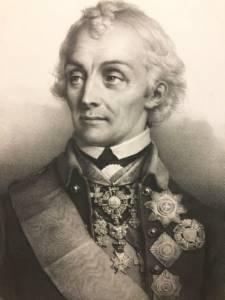
Soon, Alexander Suvorov found himself subordinate to General Magnus Johann von Berg. The talented officer was assigned to lead the dragoon, Cossack and hussar units, as he brilliantly coped with any tasks he received from the command.
In 1762, Alexander Vasilyevich was promoted to colonel. For his excellent service, the queen gave him her portrait. According to Suvorov, it was from this time that his career began.
In the mid-1760s, Suvorov commanded the Suzdal regiment. During this period of his biography, he published the book “Regimental Establishment”, where he outlined in detail the essence of his views on the formation of troops.
Suvorov - the great Russian commander
Alexander Vasilyevich Suvorov was born on November 24, 1730. Throughout his childhood he was a rather sickly child. Constant illness did not bode well for him. However, young Alexander decided to take care of his health. Regular exercises and hardening made his body quite strong. It was then that his famous saying “A healthy mind in a healthy body” appeared.
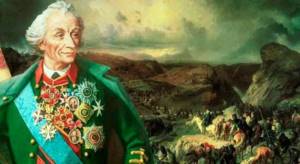
At the age of 12, Suvorov was enlisted in the Semenovsky Life Guards Regiment. In fact, his military career began in 1748. The career was not easy for the future generalissimo. He was elevated to the rank of officer only at the age of 25, after which he had a long simple period of 6 years. Alexander Vasilyevich received the rank of major general only at the age of 50. After the war with Poland. The title of Field Marshal was granted to him by Catherine the Second in 1795.
Suvorov began to use all his military skills in the war with Turkey. Under his skillful command, the Russian army did not suffer a single defeat. Suvorov was praised and loved by the soldiers. He became a kind of talisman for them.
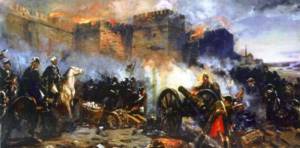
His campaigns were so successful that even with the numerical superiority of the enemy forces, Suvorov emerged with virtually no losses. His actions during the battle were so unpredictable that at times it seemed that he had gone crazy, but his strategy always turned out to be winning.
As a commander, Suvorov was very strict, but fair. He never tolerated lies and cowardice, because during his climb up the military ladder, he was one of the first to rush into battle. I was never afraid to go and hit first. This was the key to his success. Very often he encouraged courage and resourcefulness in his soldiers.
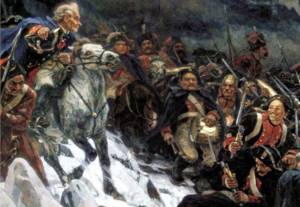
There was one moment when, already as a field marshal, Suvorov noticed one of the soldiers sleeping at his post, without swearing he poured a bucket of water on him - the frightened soldier jumped up. And when asked why he was all wet, he answered with resourcefulness that he washed his clothes, but did not have time to dry. After which he received an extraordinary title.
We also recommend reading: Kamikaze, the history of its appearance
Suvorov was famous among soldiers for his simplicity of attitude. He could calmly taste the soldiers' porridge, sitting with them on the grass and at the same time telling different stories. He was easy to communicate with and delved into the problems of the soldiers. He never punished anyone unnecessarily, but only pointed out shortcomings.
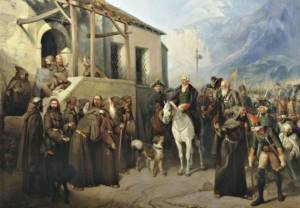
Perhaps his most famous feat is the transfer of troops across the Alps. No one had dared to take such a step before him. Moreover, no one could simply imagine that this was possible. But not the Generalissimo. He led his troops through the mountains without loss, and dealt a crushing blow to the enemy.
Catherine II personally admired him. It was she who gave him the rank of field marshal and generalissimo. She often repeated: “There has never been and never will be another commander like him.”
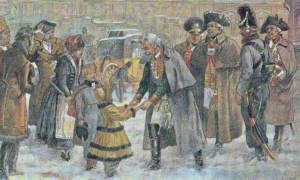
Suvorov died at the age of 70. He became an unquestioned authority for all military personnel. The Suvorov School was named in his honor, which to this day produces well-trained officers using the methods of Alexander Vasilyevich Suvorov.
Commander Suvorov
Of course, within the framework of a short biography it is quite difficult to describe Suvorov’s unique abilities, as well as to highlight all his ingenious maneuvers. However, we will briefly talk about the most important ones.
Alexander Suvorov gained the greatest fame during the reign of Catherine 2. In 1770, he was awarded the rank of major general. After a confident victory over the Turks, he was awarded the rank of lieutenant general. At this time, his boss was the famous Field Marshal Pyotr Rumyantsev.
During the Russian-Turkish war, Alexander Vasilyevich's talent was fully revealed. In 1788, already a general-in-chief, he received his first serious wound. For his courage and victory over the enemy, he was awarded the Order of St. Andrew the First-Called.
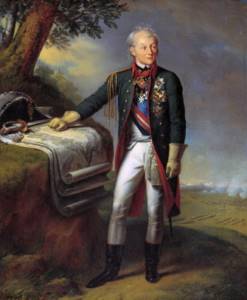
After this, the commander received many more serious injuries, but despite everything he continued not only to command the troops, but also to take an active part in the battles.
Once again, Suvorov demonstrated his talent as a strategist and tactician when he masterfully suppressed the rebellion of Emelyan Pugachev. For this, Catherine the Great gave him 2,000 ducats.
In 1789, in the battle of Rymnik, the Russian-Austrian army, numbering 25,000 people, won a brilliant victory over the Turkish army, which was 4 times larger than the Russian one. This extraordinary victory was due solely to Suvorov’s military tactics.
In 1790, in the biography of Suvorov, a battle took place that went down in history thanks to its absolutely unique tactics and strategy. It was a battle to capture the Turkish fortress of Izmail.
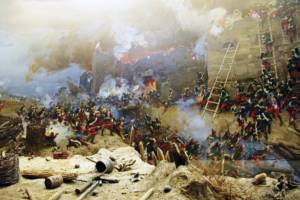
An interesting fact is that until that moment the fortress was considered impregnable. Despite this, Alexander Suvorov was able to take Izmail by storm. To do this, he prepared the troops for the assault for eight days, creating a training camp - a ditch and rampart similar to the Izmail one.
Finally, he sent an ultimatum to the commandant of the fortress, Mehmet Pasha, demanding surrender. After the commandant, who knew about the inaccessibility of the fortress, refused, on December 11 (22), 1790, Russian troops under the command of Suvorov took Izmail by storm.
It seems incredible, but Russian losses amounted to only 4,000 soldiers, while the Turks lost 26,000 soldiers.
Suvorov, Alexander Vasilievich
On August 26 (September 6), 1762, Suvorov was promoted to the rank of colonel and appointed commander of the Astrakhan infantry regiment, which was entrusted with the task of maintaining city guards in St. Petersburg during the coronation of Catherine II in Moscow. Upon arrival in Moscow, Suvorov was received by the Empress, who presented him with her portrait. Later Suvorov would write on the portrait: “ This first date paved the way for me to fame...
»
In 1763-1769 he commanded the Suzdal Infantry Regiment in Novaya Ladoga, where he compiled the “Regimental Establishment” (1764-1765) - an instruction containing the basic provisions and rules for the education of soldiers, internal service and combat training of troops. In June 1765, the Suzdal regiment took part in large maneuvers that regularly took place in Krasnoye Selo. Based on the results of the maneuvers, Suvorov was mentioned with praise in the order.
From September 1768 - brigadier (rank V class between colonel and major general).
War with the Bar Confederation. 1769—1772
See also: Bar Confederation
Krakow capitulates to Suvorov
On May 15 (26), 1769, Suvorov was appointed commander of a brigade from the Smolensk, Suzdal and Nizhny Novgorod musketeer regiments and was sent to Poland to participate in military operations against the troops of the gentry Bar Confederation (directed against King Stanislav Poniatowski and Russia). The trip to Poland demonstrated the results of training soldiers in Suvorov style: in 30 days the brigade covered 850 miles, and there were only six sick people along the way.
In the first Polish campaign, Suvorov used tactics and a system of troop training, independently developed based on the results of the Seven Years' War. Commanding a brigade, regiment, and individual detachments, he constantly moved around Poland and attacked Confederate troops, constantly putting them to flight. In particular, on September 2 (13), 1769, he defeated the Confederates near the village of Orekhovo.
On January 1 (12), 1770, he was awarded the rank of major general. In the same year, he won several more victories over the Poles, for which on September 30 (October 11), 1770, he received his first award - the Order of St. Anne, at that time still a private award of the heir to the throne, Pavel Petrovich. In October he was appointed commander of Russian troops in the Lublin district. While crossing the Vistula, he fell and broke his chest on a pontoon, as a result of which he was treated for several months. After recovery, on May 12 (23), 1771, Suvorov won a victory at Lanckorona, defeating the famous French general C. F. Dumouriez.
The most outstanding in this campaign was the victory of Suvorov with a detachment of 900 people over the corps of Hetman M. Oginsky (5 thousand people) in the case of Stolovichi on September 13 (24), 1771. The corps was completely destroyed. The Russians lost 80 people killed, the Poles - up to 1 thousand killed, about 700 prisoners, including 30 staff and chief officers.
On August 19 (30), 1772, Major General A.V. Suvorov was immediately awarded the 3rd degree (bypassing the 4th) of the Order of St. George - the most honorable Russian military award.
Suvorov's last achievement in the first Polish campaign was the capture of Wawel Castle in Krakow, captured on the night of January 22 (February 2), 1772 by a detachment of the French lieutenant colonel Claude Gabriel de Choisy[14] as a result of the negligence of Suvorov's successor as commander of the Suzdal regiment of Stahlberg. Upon receiving a message about the capture of the castle, Suvorov moved with a small detachment to Krakow, where he united with other Russian troops and on January 24 (February 4), 1772, began the siege of the castle. An attempt on February 18 (29), 1772 to take the castle by storm due to the lack of siege artillery ended in failure. But Suvorov continued the siege, during which the Poles’ attempts to come to the aid of the besieged garrison were constantly suppressed. In early April, siege artillery arrived. Part of the castle fortifications was destroyed. Famine began among the garrison. On April 15 (26), 1772, the defenders of the castle - 43 officers and 739 lower ranks - capitulated[15]. On May 12 (23), for this victory, Catherine II awarded Suvorov 1 thousand chervonets and sent him another 10 thousand rubles for distribution to the participants in the capture of the castle.
Suvorov's actions significantly influenced the outcome of the campaign and led to an early victory and the first partition of Poland.
Russian-Turkish War 1768—1774
See also: Russian-Turkish War (1768-1774)
After the Polish campaign, Suvorov was sent to Finland to inspect and strengthen the border with Sweden. He strengthened not only the Vilmanstrand fortress[16], in the city of Lappeenranta, but also all the border fortifications. But already in April 1773, he achieved an appointment to the Balkan theater of the Russian-Turkish War of 1768-1774 in the 1st Army of Field Marshal P. A. Rumyantsev, in the corps of Chief General Saltykov. Soon after his appointment, he arrived in Negoesti on May 6 (17) and received an order to conduct reconnaissance in force of the Turtukai fortress. On May 10 (21), after successfully repelling the Turkish attack, Suvorov decides to immediately conduct reconnaissance and attack the fortress without approval (the so-called first search on Turtukai). The Turkish troops did not expect a counterattack, so Turtukai was taken with significantly smaller forces than the Turks and with minimal losses (about 800-900 Russians against almost 4 thousand Turks, during the Russian battle about 200 people were killed and wounded, Turks, according to various estimates - from 1 to 1.5 thousand killed). The city was destroyed and all Christians were removed from Turtukai to be resettled on the Russian-controlled bank of the Danube. During the battle, Suvorov was seriously wounded in the leg by an exploding Turkish cannon. According to one version, he received a severe reprimand for this seizure, which was originally planned as reconnaissance. According to another, less plausible version, Suvorov was put on trial for his unauthorized actions, and the Military Collegium sentenced him to death. Catherine II did not approve the penalties imposed on Suvorov, writing: “The winners are not judged.”
The command, however, did not take advantage of Suvorov’s victory; Turkish troops re-entered the fortress and began to strengthen Turtukai. Therefore, on June 17 (28), Suvorov carried out a second search on Turtukai and again captured it, despite the numerical superiority of the Turkish troops and their readiness for an assault (according to Petrushevsky, there were again about 4 thousand Turks, about 2 thousand Russians). For victories in Turtukai, Major General A.V. Suvorov was awarded the Order of St. George, 2nd degree, on July 30 (August 10), 1773.
Defense of Girsovo
In July, Suvorov was appointed chief of defense of the city of Girsovo. On September 3 (14), 1773, the Turks, in the amount of 4 thousand infantry and 3 thousand cavalry, tried to take Girsovo by storm. The Russians had about 3 thousand people. Suvorov allowed the Turks to get close, and then suddenly counterattacked from several directions. The Turks were overwhelmed and fled, suffering heavy losses. On the Turkish side, according to various estimates, from 1.1 to 2 thousand people died, including two pashas; on the Russian side, 200 people were killed and wounded.
Battle of Kozludzhi
Main article: Battle of Kozludzhi
At the end of October, Suvorov receives leave and leaves for Moscow. On March 17 (28), 1774, he was promoted to lieutenant general. Soon he returned to the army and first covered the offensive of Kamensky's division on Pazardzhik, and then his corps united with Kamensky's division and took part in the battle of Kozludzha on June 10 (21), 1774, when Suvorov's troops captured the heights in the rear of the Turkish camp, and then at With the support of Kamensky's infantry, they defeated the entire army of seraskir Abdul-Rezak. The Russians suffered 209 casualties. The Turks lost 1,200 people. In this battle, which decided the fate of the 1774 campaign and led to the conclusion of the Kuchuk-Kainardzhi Peace Treaty, Suvorov’s actions became one of the determining factors in the victory of the Russian army.
On June 17, 1950, Kozludzha was renamed Suvorovo.
Between two Russian-Turkish wars. 1774—1786
A. V. Suvorov in a portrait by D. G. Levitsky (1786)
In 1774, Suvorov was appointed commander of the 6th Moscow Division and in August of the same year was sent to participate in the suppression of the uprising led by Emelyan Pugachev, which indicated that that the government took the uprising very seriously. However, by the time Suvorov arrived at the Volga, the main forces of the rebels were defeated by Lieutenant Colonel I. I. Mikhelson. Suvorov and his army go to Tsaritsyn, where at the beginning of September he unites with Mikhelson and begins the pursuit of the hastily retreating Pugachev. At the Bolshoy Uzen River, he almost overtook him, but at that time the Cossack centurion Kharchev[17] had already captured the impostor. For almost two weeks, from September 29 to October 12, 1774, Suvorov escorted a prisoner from Uralsk to Simbirsk past Samara, on the way he curiously asked him about military operations and unrealized plans, the rebel willingly shared his experience (Pugachev really had extraordinary military talent and organizational skills, there was a lot to learn from him).[18] For some time after this, Suvorov was engaged in eliminating rebel detachments and pacifying the population caught in the uprising zone. In particular, in the spring of 1775 he sent two battalions to the Astrakhan province to suppress the speech of the successor of the self-proclaimed tsar, Sametriev, who was moving with his detachment from the Caspian coast; the leader fled to the Don, where he was captured[19]. On September 3 (14), 1775, Suvorov was awarded 2 thousand chervonets for quickly coming to pacify the uprising.
In 1775, he received an annual leave due to the death of his father and inheritance. In the same year, on August 12 (23), daughter Natasha was born. A year later, in 1776, he was appointed commander of the St. Petersburg division. In the summer of 1776, he was in Kolomna at the head of the Moscow division stationed in the city. In the second half of the same year, the situation in the Crimean Khanate worsened, which was caused by Turkey's ongoing attempts to return Crimea to its control. In this regard, in November 1776, Suvorov was assigned to the Crimea as part of the troops of Lieutenant General Prozorovsky, where he was soon forced to take command of all Russian troops on the peninsula and in the Danube Delta during Prozorovsky’s illness. Suvorov supported the election of Khan Shahin-Girey, which took place under strong pressure from Russian diplomacy and the army. The previous khan, Turkey's protege Devlet IV Giray, tried to resist at the beginning of 1777, but his troops were scattered by the maneuvers of Suvorov's infantry and cavalry, and the khan himself fled to Turkey.
After the situation on the peninsula normalized, Suvorov received sick leave and went to visit his family in Poltava, from there at the end of 1777 he was appointed commander of the Kuban corps, where he was given the task of covering a huge border with a small army. During his three months in the Kuban, he organized an elaborate system of fortifications, combinations of stationary garrisons located in fortifications with mobile reserves, always ready to support any of the garrisons of the site, making the line of defense impregnable to the nomads. Suvorov organized well-organized reconnaissance, which allowed him to be aware of the moods and intentions of the mountain and Nogai leaders. Showing great diplomatic skill combined with decisive actions, Suvorov achieved an end to the unrest among the local Nogais. In order to establish friendly relations with the local Muslim population, Suvorov strictly prohibited cruel treatment of prisoners and resolutely suppressed rudeness towards the unarmed population.
In May 1778, he was appointed to the place of Lieutenant General of Prince A. A. Prozorovsky in the Crimea, at the same time Kuban was left under his subordination. Suvorov’s main task in Crimea was to prevent a Turkish invasion, the danger of which by that time had increased sharply. Relations with the Crimean Khan Shagin-Girey were conducted through the Russian resident A.D. Konstantinov. Suvorov’s activities were complicated by Shagin-Girey’s extremely low authority among the Crimean Tatars and the constant agitation of the pro-Turkish party and Turkish agents.
At the end of the summer - beginning of the fall of 1778, Lieutenant General A.V. Suvorov, with the support of Metropolitan Ignatius (Gozadinos), organized the resettlement of Crimean Greeks and Armenians to the Azov province.
Bust of A.V. Suvorov at the site of his headquarters in Gezlev (now Evpatoria)
On the twentieth of October 1778, A.V. Suvorov moved his headquarters from Bakhchisarai to Gezlev (now Yevpatoria), where it was located for seven months. The general himself lived in the citadel, which was located between the Khan-Jami mosque and the Orthodox cathedral.
Suvorov was not only a brilliant military man, but also a talented administrator. This year the plague epidemic began in Europe. Thanks to the strict quarantine measures introduced by the general, Gezlev avoided the terrible epidemic. Russian soldiers cleaned all the toilets and stables in the city, repaired all the city wells, fountains and baths, bathing in the bathhouse became free; military order was established in the markets, mandatory quarantine was organized for those entering the city and imported goods; Residents were forced to whitewash their houses and yards inside and out. However, local residents began to receive complaints against Suvorov. Having repaired the baths and city fountains, he introduced mandatory five-time ablution for townspeople and soldiers of the garrison, regardless of religion, under the leadership of mullahs, for which the denunciation of Christians wrote that Suvorov “ has gone crazy and knows the language not only of the Crimean Tatars, but also of the Turks
" Muslims complained about the loud ringing of bells and Suvorov's frequent singing in the church choir. The complaints remained unaddressed. (In 2004, a monument to the commander was erected in the park named after Karaev on a stylized redoubt).
After the annexation of Crimea to Russia in 1783, on the site of the fortifications in 1793, on the initiative of A.V. Suvorov, a quarantine for goods and cargo was built, and a military eye clinic was established there (the first Russian medical institution in Evpatoria).
On June 16, 1778, he prevented the Turkish landing in Akhtiar Bay, which thwarted Turkey’s attempt to start a new war in an international situation unfavorable for Russia. Suvorov reorganized the defense of the coast and warned that any attempts to land Turkish troops would be suppressed by force, so the Turkish army that arrived on ships did not dare to land, and Turkey recognized Shahin Giray as khan.
In this regard, the bulk of the Russian troops were withdrawn from Crimea in 1779, and in May Suvorov was appointed commander of the Little Russian Division in Poltava, and was soon transferred to the Novorossiysk province as the commander of the border division, directly subordinate to Potemkin. From the beginning of 1780 to the end of 1781, Suvorov was in Astrakhan, where he commanded troops and prepared a campaign against Iran, which, however, was not carried out. Then in December 1781 he was transferred to Kazan.
In 1782, Suvorov was again sent to Kuban, where he headed the Kuban Corps. In the spring of 1783, Potemkin instructed him to carry out the resettlement of the Nogais of the Lesser Nogai Horde beyond the Urals and to the Tambov and Saratov governorships. Resisting the resettlement, in the summer of 1783 the Nogais rebelled. On October 1 (12), 1783, in the Kermenchik tract (on the Laba River, 12 versts from its confluence with the Kuban [20] [21]), Suvorov, commanding the combined forces of the Kuban Corps and the Don Cossacks, completely defeated the Nogai troops. Journalistic sources claim that at least 5 thousand Nogais died in one day[20][22][23]. As a result, the majority of the Murzas expressed their submission to Suvorov and recognized the annexation of Crimea and the Nogai lands to Russia. During 1783, Suvorov carried out expeditions against individual detachments of the Nogais. For this Suvorov received the Order of St. Vladimir, 1st degree.
After Turkey recognized the inclusion of these lands into Russia, in April 1784 Suvorov was appointed commander of the Vladimir division, and in 1785 - commander of the St. Petersburg division.
On September 22 (October 3), 1786, he was promoted to general-in-chief. In January 1787 he was appointed commander of the Kremenchug division. In this capacity, Suvorov took part in demonstration exercises in the presence of Catherine II and the Austrian Emperor Joseph II. The historian Korotun questions the conduct of the maneuvers in Kremenchug, but notes that for the Poltava maneuvers Suvorov received a snuffbox with diamonds as a reward[24].
Russian-Turkish War 1787—1791
See also: Russian-Turkish War (1787-1791)
Battle of Kinburn
Main article: Battle of Kinburn
Rescue of Chief General A.V. Suvorov by grenadier Stepan Novikov in the Battle of Kinburn on October 1, 1787
With the beginning of the Russian-Turkish War of 1787-1791, Chief General Suvorov was appointed commander of the Kinburn Corps, which was entrusted with the defense of the Black Sea coast, from the mouth of the Bug to Perekop. At the beginning of the war, the Turks directed their main attack on the Kinburn fortress, which was defended by a garrison of 4 thousand people led by Suvorov. The Battle of Kinburn took place on October 1 (12), 1787. Turkish ships landed troops in the amount of 5-6 thousand people, who began to advance towards the fortress. Suvorov forbade a counterattack until the Turks approached 200 steps to the fortress, and then he himself led the counterattack. As a result, the Turkish troops were pressed to the shore, and their remnants returned to the ships at night, having lost about 4 thousand killed. The losses of Russian troops amounted to about 500 people. For the defense of Kinburn, Suvorov received the Order of St. Andrew the First-Called, and was wounded twice in battle.
Siege of Ochakov
The following year, Suvorov, as part of Potemkin’s army, took part in the siege of Ochakov. He repeatedly proposed to launch an assault, but Potemkin hesitated. During the siege, Suvorov's troops successfully repulsed enemy attacks that interfered with the siege work. A particularly large Turkish attack of 3 thousand people took place on July 27 (August 7). Suvorov personally led two grenadier battalions into battle and drove back the Turks, while being wounded. He immediately suggested breaking into the fortress on the shoulders of those retreating, and the Austrian Prince de Ligne also suggested this. However, Potemkin ordered a retreat here too. The wounded Suvorov had to surrender command to Lieutenant General Bibikov[25]. As a result, Ochakov was captured only at the end of 1788.
Battle of Focsani
Main article: Battle of Focsani
In 1789, Suvorov was given a 7,000-strong detachment to cover the left bank of the Prut River and support the allied forces if necessary. Due to the slow advance of the Russian army, Turkish troops under the command of Yusuf Pasha (30 thousand people) moved towards Ajud to defeat the Austrian troops. The commander of the Austrian division (18 thousand people), Prince Friedrich Josiah of Coburg, turned to Suvorov for help, who, on July 17 (28), united his detachment with the Austrians (having covered 40 miles in 26 hours). At 3 o'clock in the morning on July 18 (29), the combined troops under the command of Suvorov advanced to the village of Focsani, where, as a result of a 10-hour battle, they completely defeated the Turks, whose losses amounted to 1.6 thousand people and 12 guns, the losses of the Russian-Austrian troops were 400 people.
Battle of Rymnik
Main article: Battle of Rymnik
Engraving with a portrait of A.V. Suvorov, made in 1870, on which the victory at Rymnik is symbolically depicted in the center
After the victory at Focsani, Potemkin sent the bulk of the Russian troops to Bendery. Meanwhile, the 220,000-strong Turkish army under the command of Yusuf Pasha again began to approach Focsani, where the Austrian corps was stationed, having previously sent one detachment east of the Prut to disorganize the Russians. This detachment began to be pursued by the army of General Repnin. The commander of the Austrian army, the Prince of Coburg, sent a note to Suvorov with just two words: “Save us.” To which Suvorov replied: “I’m coming.” Suvorov again came to the aid of the Austrians and, having covered 100 km in 2.5 days, united with them in full view of the enemy. On September 11 (22), 1789, troops under the command of Suvorov (25 thousand people) quietly crossed the Rymnik River and, despite the fourfold advantage of the Turks, attacked the Turkish troops. The battle of Rymnik lasted 12 hours and ended with the complete defeat of the Turkish army, which lost up to 20 thousand people killed. The losses of the allied forces amounted to 600 people (400 Austrians and 200 Russians).
For the victory in the battle of Rymnik, by decree of the Roman Emperor Joseph II of September 13 (24), 1789, Chief General Alexander Vasilyevich Suvorov, with his descendants, was elevated to the dignity of a count of the Holy Roman Empire, and by the Nominal Highest Decree of the Russian Empress Catherine II, from On October 6 (17), 1789, he was elevated, with his descendants, to the dignity of count of the Russian Empire, with the name Count Suvorov-Rymniksky
. On October 18 (29), 1789, he was awarded the Order of St. George, 1st degree (seventh in the order of awarding the 1st degree and sixth on the list of holders of the Order of St. George, 1st degree in the entire history of the order).
Capture of Ishmael
Main article: Assault on Ishmael
Commander A.V. Suvorov. Lithograph 1828
In 1790, the Southern Army of G. A. Potemkin, having won a number of victories, approached Izmail - the most powerful fortress on the left bank of the Danube, fortified according to the latest requirements of serfdom and was considered impregnable. The siege of Ishmael dragged on. Potemkin was never able to take the fortress and entrusted the further siege to Suvorov, who arrived in the Russian camp on December 2 (13), 1790.
For eight days, Suvorov prepared the troops for the assault, creating a training camp - a ditch and rampart similar to the Izmail one. Finally, he sent an ultimatum to the commandant of the fortress, Mehmet Pasha, demanding surrender. After the latter’s refusal, on December 11 (22), 1790, Russian troops commanded by Suvorov took Izmail by storm.
Russian losses amounted to about 4 thousand killed and 6 thousand wounded. The Turks lost 26 thousand killed and 9 thousand captured. The capture of Ishmael was one of the decisive factors in victory in the war. On March 25 (April 5), 1791, Suvorov received the honorary title of lieutenant colonel of the Life Guards Preobrazhensky Regiment.
Suvorov himself considered this assessment of his military talents insufficient, especially in comparison with the awards and honors received by Potemkin. This is explained by Suvorov’s poor relationship with Potemkin, who at that time had great influence on Catherine II.
In memory of the Generalissimo, today in Izmail there is a monument in his honor; an avenue and secondary school No. 1 are named after him[26]. In the Izmail region there is the village of Suvorovo.
Service in Finland and the Northern Black Sea region. 1791—1794
Equestrian monument to Suvorov, erected in 1979 in Tiraspol
Since 1791, commanding Russian troops in Finland, Suvorov supervised the construction of fortifications on the border with Sweden. He was also entrusted with command of the port of Rochensalm and the Saima flotilla. At the suggestion of Suvorov, four military canals were built for the Saima flotilla, ensuring the passage of ships from Vilmanstrand to Neishlot entirely through Russian territory[27]. The Kymenegrad fortress was also built, which is located on the territory of the present city of Kotka.
After the death of Potemkin in 1792, he was appointed commander of the troops in Novorossiya (Ekaterinoslav governorate and Tauride region) for 2 years. By this time, the need arose to strengthen the new Russian-Turkish border, which henceforth ran along the Dniester River. The work of drawing up a plan for the engineering preparation of the borders was entrusted to Suvorov. Suvorov paid main attention to strengthening the left bank in the lower reaches of the Dniester. By his order, the Srednyaya fortress was built on the left bank of the Dniester on the site of a village burned by the Turks, and the city of Tiraspol was founded in 1792. Under the leadership of Suvorov, the construction of fortifications is being carried out in Khadzhibey (Odessa). The main goal of these military preparations was a possible war (which never took place), during which the empress dreamed of recapturing Constantinople from the Turks.
To plan this new campaign, the commander needed accurate intelligence, and Suvorov wrote to his future biographer Friedrich Anting, whom he had met the day before when he, in the retinue of the Russian envoy, proceeded to Constantinople through the territories entrusted to him. Suvorov received a detailed answer to his letter, which consisted of 22 questions about the organization of the city’s defense, sources of water and food supplies, the state of the army and navy, as well as the political situation in the enemy camp, from the hands of Anting in February 1794[28]. The satisfied commander, through the all-powerful favorite Count P. A. Zubov, arranged for Anting to serve in the military with the rank of second major at his own headquarters, where he became his personal secretary and adjutant[29].
Suppression of the Polish uprising of 1794. Assault on Prague
Main article: Kosciuszko Rebellion
In May 1794, Suvorov was sent to Podolia to prepare for the second Polish campaign. In the first half of August, he was enlisted in the army of Chief General N.V. Repnin, and with a detachment of 4.5 thousand he entered the territory covered by the uprising. The number of Suvorov's troops after the addition of other detachments increased to 11 thousand soldiers. In 6 days, Suvorov’s corps won 4 victories: September 3 (14) near the town of Divin; the next day, near Kobrin, the Cossack vanguard of Suvorov defeated a cavalry detachment of Major Ruschich [30] numbering up to 400 sabers. On September 6 (17), at the Krupczycy monastery near Kobrin, Suvorov attacked the division of Karol Sierakowski (numbering 5 thousand people with 26 guns) and threw him back to Brest[31]. On September 8 (19), he again fought with Serakovsky’s troops (13 thousand with 28 guns) at Brest and completely defeated them.
On October 10, the leader of the rebels, Kosciuszko, was captured by Fersen’s detachment near Maciejowice, which then joined Suvorov, as a result of which the number of the latter’s troops increased to 17 thousand soldiers.
These troops moved towards Warsaw. A detachment of General Mayen, consisting of 5,560 soldiers (including 1,103 cavalry) and 9 guns, was sent to meet Suvorov’s troops. At 5 o'clock in the morning on October 15 (26), a battle began at Kobylka, which lasted more than 5 hours and ended with the defeat of the Polish troops, some of which retreated to Prague, a suburb of Warsaw on the right side of the Vistula.
Until October 21 (November 1), Suvorov’s troops were engaged in training soldiers on the approach to Warsaw, preparing fascines, ladders and fences to overcome the fortifications.
Storming of Prague by Suvorov's troops
Main article: Storm of Prague (1794)
Suvorov's entry into Warsaw
On October 23 (November 3), Suvorov’s troops (up to 25 thousand soldiers with 86 guns) approached Prague, a suburb of Warsaw, and began shelling the city itself and its walls. The next day, at approximately 5 o'clock in the morning, seven columns launched an attack on fortifications dilapidated by artillery fire, defended by a garrison and armed city militia (20-30 thousand) with 106 guns. Russian columns burst into Prague from different directions under fire. Panic began among the defenders of Prague, and by 9 a.m. on October 24 (November 4), the Polish troops capitulated.
In the battle, according to various sources, from 10-13[32][33] to 20 thousand[34] Poles were killed and a little more were taken prisoner; on the Russian side, according to the official report, 580 soldiers were killed and 960 were wounded. Russian General von Klugen recalled this last battle in Prague[35]:
| They shot at us from the windows of houses and from the roofs, and our soldiers, rushing into the houses, killed everyone they came across <...> Bitterness and thirst for revenge reached the highest degree <...> the officers were no longer able to stop the bloodshed < ...> At the bridge there was another massacre. Our soldiers fired into the crowds, without distinguishing anyone, and the piercing screams of women and the screams of children terrified the soul. It is rightly said that shed human blood induces a type of intoxication. Our fierce soldiers saw in every living creature our destroyer during the uprising in Warsaw. “Sorry, no one!” - our soldiers shouted and killed everyone, without distinguishing either age or gender... |
It was based on materials from the events in Prague that subsequent Polish and French propaganda formed the image of Suvorov as a cruel military leader in the eyes of Western Europeans. Suvorov received deputies from Warsaw directly on the battlefield, among many corpses, defiantly warning the Poles about the consequences of further resistance. Nevertheless, Suvorov’s demonstrative actions had an effect, and on October 29 (November 9) on the banks of the Vistula, the magistrate presented Suvorov with bread and salt and city keys, which symbolized the surrender of Warsaw. At the request of the Polish king Stanislaus to release one Polish officer, Suvorov immediately released 500 captured officers, and even before that, 6 thousand Polish militias were released to their homes. The city magistrate, on behalf of the residents of Warsaw, presented Suvorov with a gold snuff box with diamonds and the inscription “ Warsaw to its deliverer, November 4, 1794”
" After the surrender of Warsaw and the amnesty announced by Suvorov, rebel troops throughout Poland laid down their arms within a week.
After the end of the battle, Chief General Suvorov sent a letter to Empress Catherine II, consisting of three words: “ Hurray! Warsaw is ours!
" and received the answer "
Hurray!
Field Marshal Suvorov! "[36] Thus, on November 19 (30), 1794, for the capture of Prague, Suvorov was awarded the highest military rank - Field Marshal, as well as
At the beginning of 1795, Suvorov was appointed commander of all Russian troops in Poland, then commander-in-chief of an 80,000-strong army located in the Bratslav, Voznesensky, Ekaterinoslav and Kharkov governorships with headquarters in Tulchin.
On August 18 (29), 1795, he was granted the Kobrin Key estate of 7 thousand souls in Belarus, received the Prussian Order of the Black Eagle, Red Eagle and other awards.
During this period, he wrote the book “The Science of Victory” - an outstanding monument to Russian military thought.
Suvorov's campaigns
In 1796, Catherine the Great died, and Paul I, a fanatical supporter of the Prussian military system of Frederick the Great, took the throne, according to which he began to reform the Russian army.
Naturally, this could not please the Russian commander, who had proven in practice that his military system was much more effective.
In short, the relationship between the new emperor and Suvorov did not work out. On February 6, 1797, Suvorov was dismissed without the right to wear a uniform and at the end of March he arrived at his family estate.
However, when the political and military situation in Europe began to heat up, the invincible Alexander Suvorov was remembered again. The Austrian and British leadership turned to the Russian emperor with a request that he appoint Suvorov to command the allied forces.
On February 6, 1799, Suvorov received a letter from the emperor:
“Count Alexander Vasilyevich! Now is not the time for us to settle accounts. God will forgive the guilty. The Roman Emperor demands you to become the commander of his army and entrusts you with the fate of Austria and Italy..."
early years
The date and place of birth of Alexander Suvorov is not known for certain, but many scientists believe that he was born on November 13 (24), 1730 in Moscow in the family of a general. Got its name in honor of Prince Alexander Nevsky. He spent his childhood in the village, on his father's estate.
The military family left its mark on Suvorov’s fate from childhood. Despite the fact that Alexander was a weak and often ill child, he wanted to become a military man. Suvorov began to study military affairs and strengthened his physical fitness. In 1742 he went to serve in the Semenovsky regiment, where he spent 6.5 years. At the same time, he studied in the Land Cadet Corps, learned foreign languages, and was engaged in self-education. General Abram Hannibal, who was a friend of the Suvorov family and the great-grandfather of Alexander Pushkin, had a great influence on the future fate of Suvorov.
A short biography of Suvorov for children and students of different classes is a small but meaningful and interesting story about his exploits and services to the Motherland.
Italian campaign of Suvorov
Speaking briefly about Suvorov’s biography, it is still impossible to do without historical information. In 1798, Russia joined the 2nd anti-French coalition (Great Britain, Austria, Turkey, the Kingdom of Naples).
A united Russian-Austrian army was created, headed by the brilliant Russian commander Alexander Suvorov. Literally immediately began the famous campaign in northern Italy, captured by French troops.
The Italian campaign was a stunning success and still delights contemporaries. Suvorov won one battle after another, and at the cost of relatively small losses he managed to destroy half of the enemy army.
In the famous Battle of Novi, the French suffered enormous human and combat losses. In the Italian campaign this victory played a decisive role.
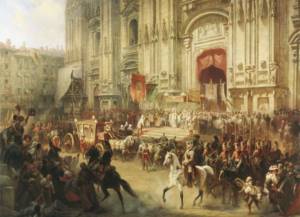
Meeting Suvorov in Milan in April 1799
Describing the attitude of contemporaries to Suvorov’s victories in the Italian Campaign, historian and author of the most fundamental study of Suvorov’s biography Petrushevsky cites the following facts:
Not only Russia and Italy honored the Russian commander and admired his name; in England he also became the first celebrity of the era, a beloved hero... In Russia, Suvorov's fame was brought to its apogee by patriotic feeling; he was the pride of his fatherland; The newspapers of that time were filled with words: “It’s nice to be Russian in such a glorious time for Russia.
After the liberation of Northern Italy, Suvorov intended to launch an offensive against France. However, the allies, fearing the strengthening of Russian influence, ordered him, leaving Austrian troops in Italy, to head to Switzerland at the head of Russian troops, unite with the Rimsky-Korsakov corps operating there and from there go to France.
Swiss campaign of Suvorov
On August 31 (September 11), 1799, Suvorov’s heroic Swiss campaign began, which became a great page in Russian history.
In this campaign, the losses of the Russian army, which emerged from encirclement without food and ammunition and defeated all the troops on its way, amounted to about 5 thousand people (up to 1/4 of the army), many of whom were killed during the transitions.
However, the losses of the French troops, who had an overwhelming superiority in numbers, exceeded the losses of the Russian troops by 3-4 times. 2,778 French soldiers and officers were captured, half of whom Suvorov managed to feed and bring out of the Alps as evidence of a great feat.
The crossing of the Alps by 68-year-old Alexander Suvorov was unprecedented in the history of military affairs. No one, either before or after Suvorov, performed it in winter. Russian troops valiantly fulfilled their allied obligations to the Austrians, which cannot be said about the latter.
After the completion of the Swiss campaign, Paul I decided to mint a special medal, on which he wanted to reflect the “contribution” of the Austrians (who only interfered with the common cause). Suvorov, whom the emperor approached with a request to suggest variants of the text of the inscription on the medal, gave the following advice: make the medal the same for both Russians and Austrians, but at the same time emboss “God is with us” on the “Russian” version, and “God is with us” on the “Austrian” version - "God with you".
For this campaign, unparalleled in difficulty and heroism, Suvorov was awarded the highest military rank on October 28 (November 8), 1799 - Generalissimo of the Russian Land and Naval Forces, becoming the fourth in Russia to be awarded this title.
Generalissimo Suvorov
Thanks to the unique experience and natural genius of the commander, Suvorov was able to develop his own strategy and tactics of warfare.
From his pen came the famous manual “The Science of Victory,” which became a reference book not only for military leaders, but also for ordinary soldiers.
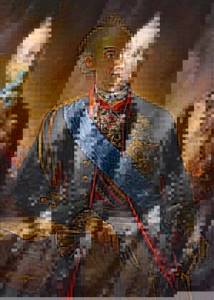
Alexander Vasilyevich Suvorov is the owner of all the highest military awards of his time. An interesting fact is that a monument was erected to him during his lifetime.
Suvorov schools arose in Russia, where cadets were trained in military affairs. During the Great Patriotic War (1941-1945), the Order of Suvorov appeared. It was awarded to Soviet commanders who achieved the greatest success in leading the army.
short biography
- 1754 - Alexander Suvorov’s full-fledged military service began after he was appointed to the Ingria Infantry Regiment, and at the same time awarded the rank of lieutenant.
- 1756 - took part in the Seven Years' War in Europe, but not as he would have liked. With the rank of Chief Provision Master, he was assigned to the rear service, which was responsible for supplying the army.
- 1758 - with the rank of prime major , Suvorov was transferred to the active army, but even here he was appointed officer of the main quarters, too far from the battlefields, where the young officer was so eager.
- 1759 - Alexander Vasilyevich finally took part in the first battles, on July 14 he commanded a cavalry detachment that put the Prussian squadron to flight, and participated in the Battle of Kunersdorf .
- 1760 - having been appointed as an officer on duty under General-Chief Willim Villimovich Femor , commander-in-chief of the Russian troops in Prussia, took part in the assault and capture of Berlin.
- 1761 - participated in a number of battles in Poland, taking command of prefabricated cavalry detachments that acted as a partisan unit covering the withdrawal of Russian troops.
- 1762 - 20-year-old Suvorov received an appointment to the Astrakhan Infantry Regiment , along with the rank of colonel, his duties were charged with security function during the coronation of Catherine II.
- 1763 - he was transferred to Novaya Ladoga, where he took command of the Suzdal Infantry Regiment, and wrote one of the most significant works, known as “Regimental Institution” .
- 1769 – Alexander Suvorov, with the rank of brigadier, made a trip to Poland, where the Russian army supported King Stanislav Poniatowski (Catherine II’s protégé) in the War of the Bar Confederation.
- 1770 - for victories over the Polish-gentry confederates, Alexander Vasilyevich was awarded the rank of major general and the Order of St. Anne , which became his first high award for merit.
- 1771 - the newly minted major general won his first significant victory when, during the War of the Bar Confederation, he defeated the famous French general Charles Dumouriez .
- 1773 - during the Russian-Turkish War of 1768-1774. Suvorov took the Ottoman fortress of Turukai , capturing a large garrison, for which he was awarded the Cross of St. George, 2nd Art .
- 1789 - Alexander Vasilyevich won one of his most significant victories - at Rymnik , for which he was elevated to the dignity of count of the Russian and Roman empires, and awarded George 1st Art.
- 1790 - led the heroic assault and capture of the Turkish fortress Izmail , which became another of his great victories and predetermined the outcome in the Russian-Turkish War of 1787-1791. in favor of Russia.
- 1795 - for the storming and capture of Warsaw, and the suppression of the Polish uprising, Alexander Vasilyevich was appointed commander-in-chief of the Russian troops; during that period he wrote “The Science of Victory” .
- 1799 - Suvorov made two of the greatest campaigns in his military career - Italian and Swiss , inflicting a series of defeats on the French, forcing them to retreat from the Apennine Peninsula.
- 1800 - shortly after returning to Russia, on May 5, the Count of the Russian Empire and Prince of Italy, Generalissimo Alexander Vasilyevich Suvorov-Rymnitsky died in St. Petersburg .
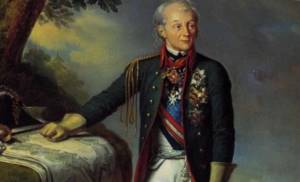
Personal life
In Suvorov’s personal life, not everything was as rosy as in his professional career. Since he devoted all his youth to military affairs, he did not have a family until he was 40 years old.
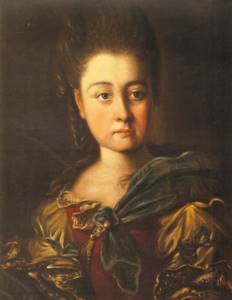
Varvara Ivanovna, wife of Alexander Suvorov
In this regard, the father introduced his son to a simple and poorly educated girl, Varvara Prozorovskaya, who was supposed to be the family happiness of the commander.
In 1774, the young people got married. They had a daughter, Natalya, and a son, Arkady. However, this family union was unsuccessful. During one of the military campaigns, Alexander Vasilyevich was informed about his wife’s infidelities.
In this regard, he wanted to divorce his wife, but abandoned this idea due to pressure from Varvara’s relatives and the request of the empress herself.
However, in 1784, the field marshal still broke off any relations with Prozorovskaya. As a result, the daughter was sent to be raised at the Smolny Institute, and her son Arkady, born the same year, remained to live with his mother.
An interesting fact is that Alexander Vasilyevich recognized Arkady only 12 years after his birth. When Suvorov's son turned 26 years old, he drowned in the Rymnik River.
